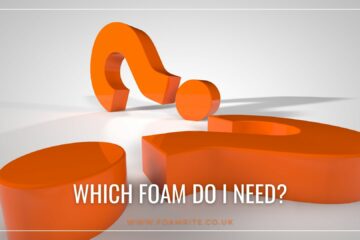What Is The Difference Between Open Cell Foam and Closed Cell Foam?
If you are new to the world of foam, you will probably have many questions about the difference between open cell foam and closed cell foam. Well, the key difference is within their cell structure.
Open Cell Foam
Open cell foam, or polyurethane foam, has small cells that are not completely sealed and allow air to fill the space or take on water if soaked. This means the foam can be easily compressed and then naturally recover back to its original shape. As a result, PU foam is widely known for its use in the mattress and furniture industry as sofa cushion foam, foam mattresses, campervan foam, upholstery, headboards, etc.
Furthermore, polyurethane foam has proven to be just as effective in sound absorption and soundproofing. Many of the acoustic tiles and sheets utilise open cell foam to absorb unwanted soundwaves through its porous cell structure.
When purchasing polyurethane foam, you will often have to choose between varying foam densities and hardnesses. To simplify things, Foamrite names our upholstery grade foams to best match physical properties i.e. firm foam or firm memory foam.
Visit our online shop for free quotes on open cell foam grades. A simple three-step process for foam cut to size.
Closed Cell Foam
Closed cell foam, or polyethylene (PE) foam, has uniform, interlocking cells that are sealed shut preventing air or water to pass through. Consequentially, this type of foam is rigid and water-resistant making this type of foam highly suited for shock absorption and thermal insulation.
Sometimes, closed cell foam is often known by the brand name “Plastazote”. This brand is one of many that manufacture polyethylene foam including OK Company, Palziv and Koepp.


Common examples of closed cell foam in use include building or caravan insulation, buoyancy aids, gym mats and camping mats.
| Similarities |
| Both are easily fabricated for DIY and creative uses Both known for their great durability and longevity Both can be bought in sheets of varying densities and thicknesses |
| Differences |
| Polyethylene foam is suitable for exposed use indoors and outdoors; polyurethane foam should only be used outdoors if covered with a waterproof fabric as the foam is damaged by UV, and CO2 and takes on water Polyethylene foam is available in a multitude of additives (i.e. EVA, fire retardancy, etc.); polyurethane foam is much more limited Polyethylene foam is readily available in a wide range of colours; only very limited ranges of polyurethane foam offer this Polyurethane foam is very vulnerable to surface damage; polyethylene foam is very robust |
Alternatively, if you have any specific questions, please do not hesitate to Contact Us.


